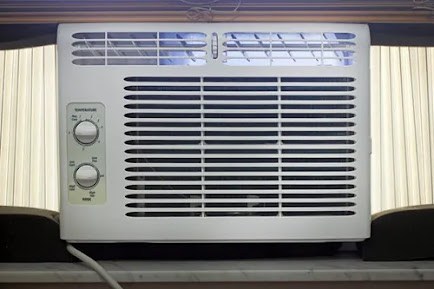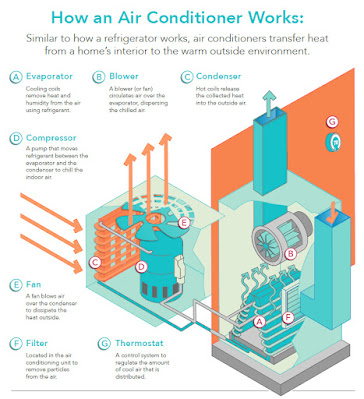CAR AIR CONDITIONERS.
Car air conditioners serve the primary function of controlling the temperature and humidity inside the vehicle, providing a comfortable and pleasant driving experience. There are two primary types of car air conditioners as stated below.
It's worth noting that within the two primary types, there can be
variations and advancements in technology, such as dual-zone or multi-zone air conditioning systems that allow for customized temperature control in different areas of the vehicle's cabin. Additionally, some newer vehicles also offer advanced features like automatic climate control, which maintains a set temperature and adjusts fan speeds and airflow automatically to optimize comfort.
Conventional Car Air Conditioner
Conventional car air conditioners operate using a refrigeration cycle. They consist of several components, such as a compressor, condenser, expansion valve, and evaporator. The compressor pressurizes refrigerant gas, which then flows through the condenser to release heat. The cooled and liquefied refrigerant then passes through the expansion valve, where it expands and becomes cold, absorbing heat from the cabin air. Finally, the refrigerant evaporates in the evaporator, cooling the air blown into the vehicle's interior.
Electric Car Air Conditioner
Electric or hybrid vehicles often use electric car air conditioning systems that operate independently of a conventional car's engine. These systems rely on an electric compressor and an electrically driven air conditioning unit instead of the engine-driven compressor. The electric compressor operates using power from the vehicle's battery or electric motor system. Electric car air conditioners provide cooling and climate control without the need for the engine to be running, helping to conserve energy and reduce emissions.
FUNTIONALITY PROCESS OF CAR AIR CODITIONERS.
Compressor
The compressor is a crucial component of the air conditioning system. It is driven by a belt connected to the engine and is responsible for pressurizing the refrigerant gas (typically a blend of chemicals like R-134a) and circulating it throughout the system.
Condenser
The refrigerant gas, under high pressure and temperature, flows into the condenser, which is located in front of the car's radiator. The condenser helps dissipate heat from the refrigerant by transferring it to the surrounding air. As a result, the refrigerant gas condenses into a liquid state.
Expansion valve
The liquid refrigerant then enters the expansion valve, which acts as a restriction in the system. It decreases the pressure and temperature of the refrigerant as it passes through, preparing it for the next phase.
Evaporator
The cooled and low-pressure liquid refrigerant enters the evaporator, which is typically located inside the HVAC (Heating, Ventilation, and Air Conditioning) unit in the car's dashboard. Air from the cabin is blown over the evaporator, causing the liquid refrigerant to evaporate and absorb heat from the surrounding air. This process cools down the air that is later circulated back into the cabin.
Blower fan
The blower fan, controlled by the air conditioning system, draws air from the cabin and pushes it over the evaporator, enhancing the cooling effect. The speed of the blower fan can be adjusted to control the airflow and temperature inside the car.
Thermostat
The thermostat measures the temperature inside the car and sends a signal to the air conditioning system to adjust the cooling output accordingly. It helps maintain the desired temperature set by the driver.
Refrigerant cycling
The refrigerant continuously circulates through the system, going through the process of compression, condensation, expansion, and evaporation. This constant cycling allows for the transfer of heat from the cabin to the outside, providing effective cooling.
Controls and settings
Car air conditioners have various controls and settings that allow the driver and passengers to adjust the temperature, fan speed, air distribution (such as floor, face, or defrost vents), and overall operation of the system. These controls are typically located on the car's dashboard or in its multimedia system.
Car air conditioners require regular maintenance, including refrigerant checks, filter replacements, and performance inspections, to ensure optimal functionality and efficiency. Additionally, modern car air conditioning systems may include additional features like dual-zone controls, auto climate control, and air quality filters to further enhance comfort and convenience.
REFILLING OF CAR AIR CONDITIONERS
Refilling car air conditioners, also known as recharging the system, requires a specific set of steps to ensure proper functioning. Below is the process of refilling the car air conditioners:
Gather necessary supplies
You will need an air conditioner refrigerant refill kit, which typically includes a canister of refrigerant and a hose with a pressure gauge. Consult your car's manual to determine the appropriate refrigerant type and quantity.
Find the low-pressure port
Locate the low-pressure port on the air conditioning system in your car. It is typically located on the larger diameter aluminum tubing that runs from the compressor to the condenser.
Prepare the system
Start the car's engine and turn the air conditioning system to the maximum setting. Set the air circulation to the "recirculate" mode. This will allow the refrigerant to flow smoothly through the system.
Connect the refill kit
Connect the hose from the refill kit to the low-pressure port. Ensure it is securely attached.
Check the pressure
Check the pressure gauge on the refill kit to determine the current pressure of the air conditioning system. This will help you gauge the need for a refill. Be aware of the recommended pressure range for your specific vehicle.
Recharge the system
Slowly open the valve or turn the dial on the refill kit to allow the refrigerant to enter the system. Monitor the pressure gauge while refilling and ensure that you stay within the recommended range. Overfilling can lead to system damage.
Shake the canister
As you refill the system, periodically shake the canister of refrigerant to ensure a consistent flow.
Monitor the temperature
Assess the air conditioning system's temperature as you continue to recharge it. The air should gradually become cooler as you refill. If you notice any issues or the temperature does not improve, it may be best to consult a professional.
Finish the refill
Once the desired pressure range is reached, close the valve or adjust the dial on the refill kit to stop the flow of refrigerant.
Disconnect the refill kit
Disconnect the hose from the low-pressure port and securely close the port's protective cap.
Conclusion
This is a general guide, and the process may vary slightly depending on your car's make and model. If you are unsure or uncomfortable performing the refill yourself, it is best to seek assistance from a professional mechanic or an auto repair shop.





Comments
Post a Comment